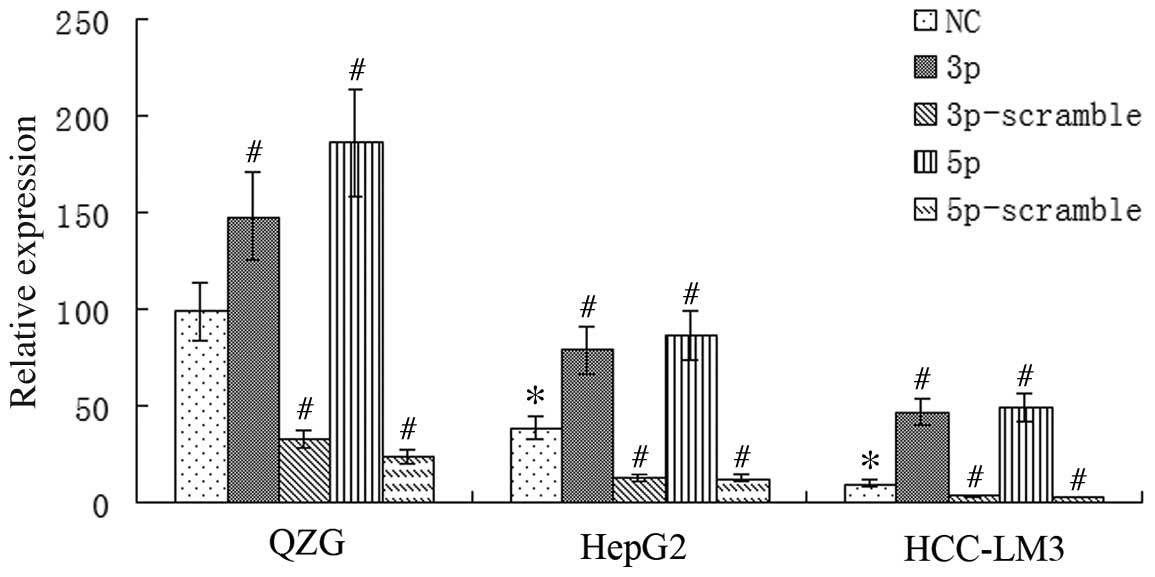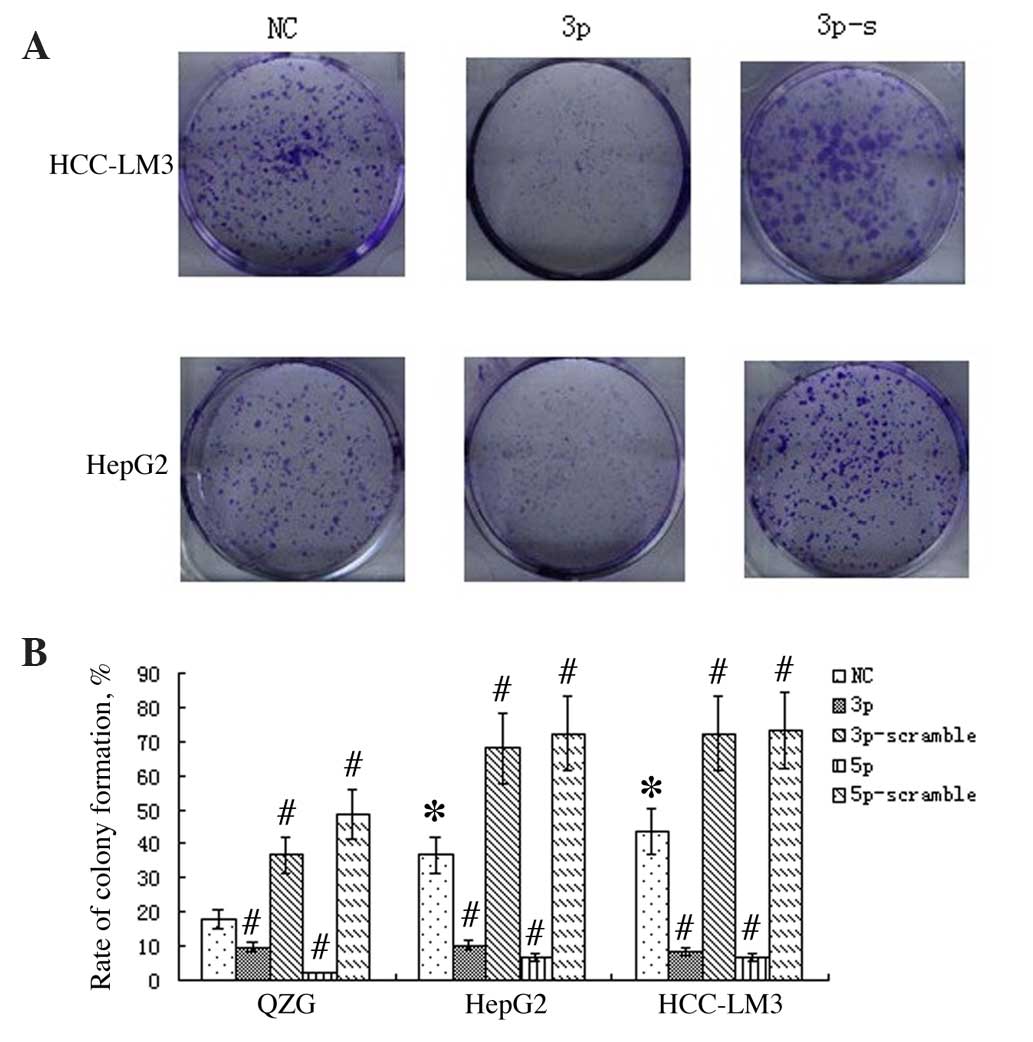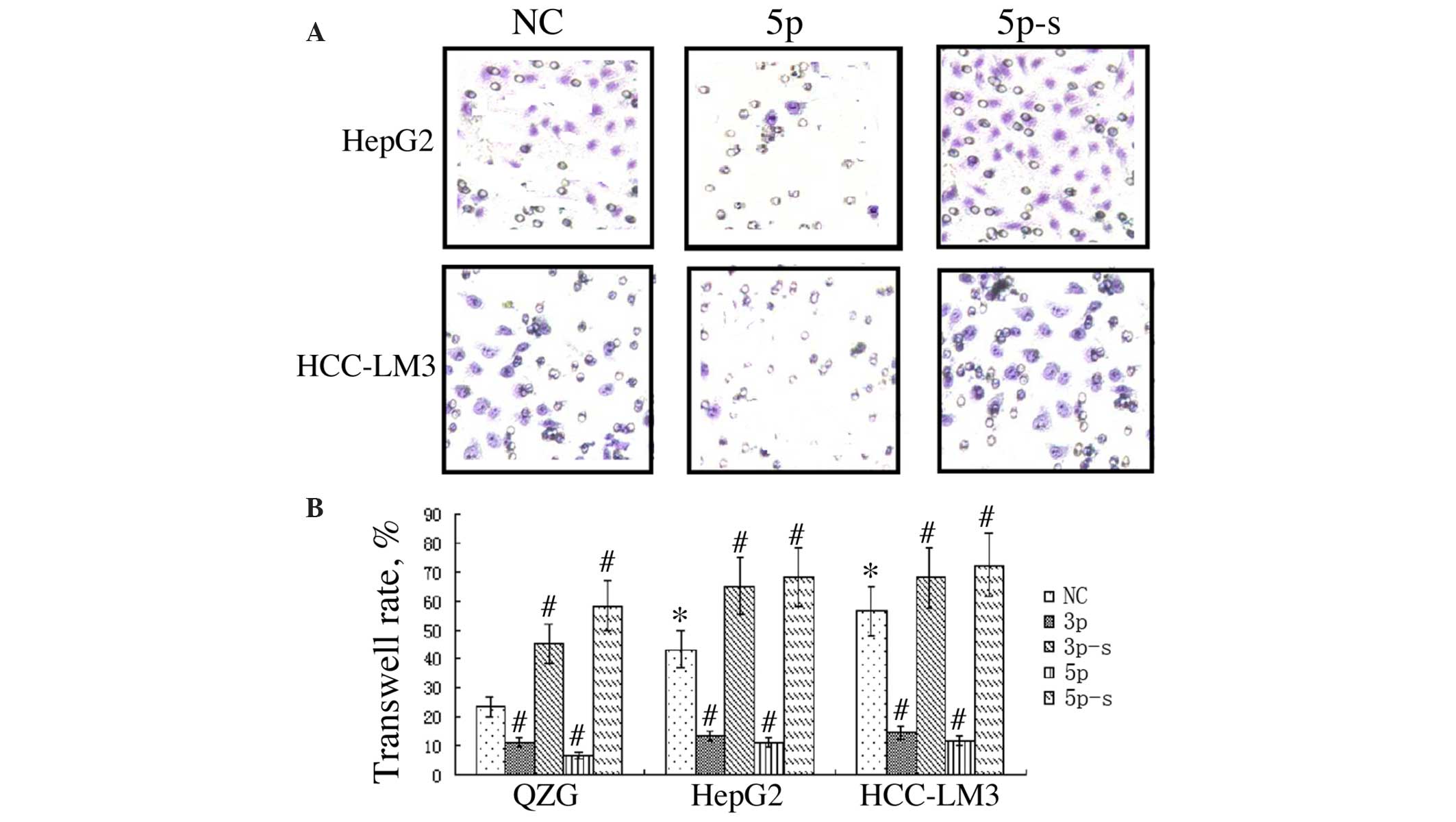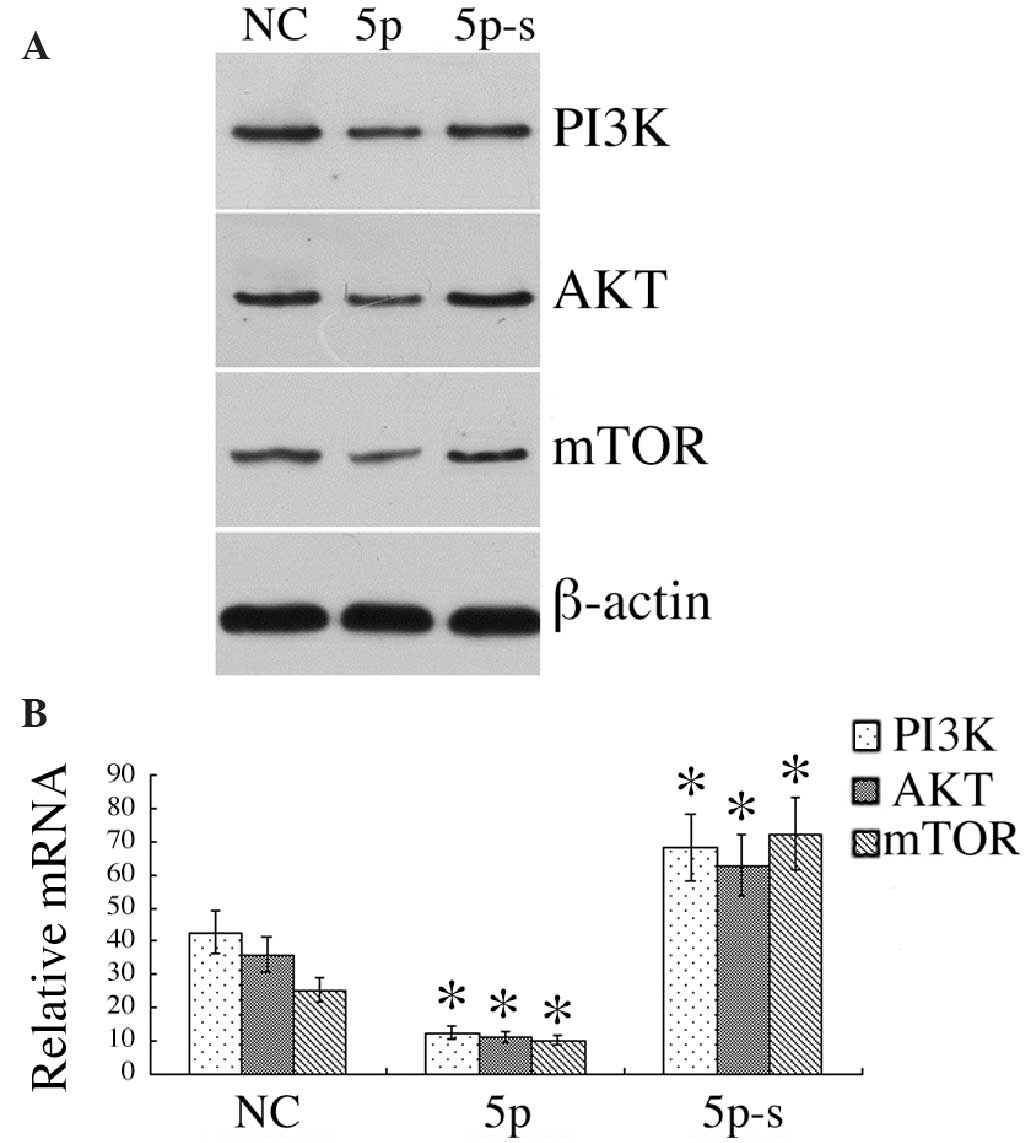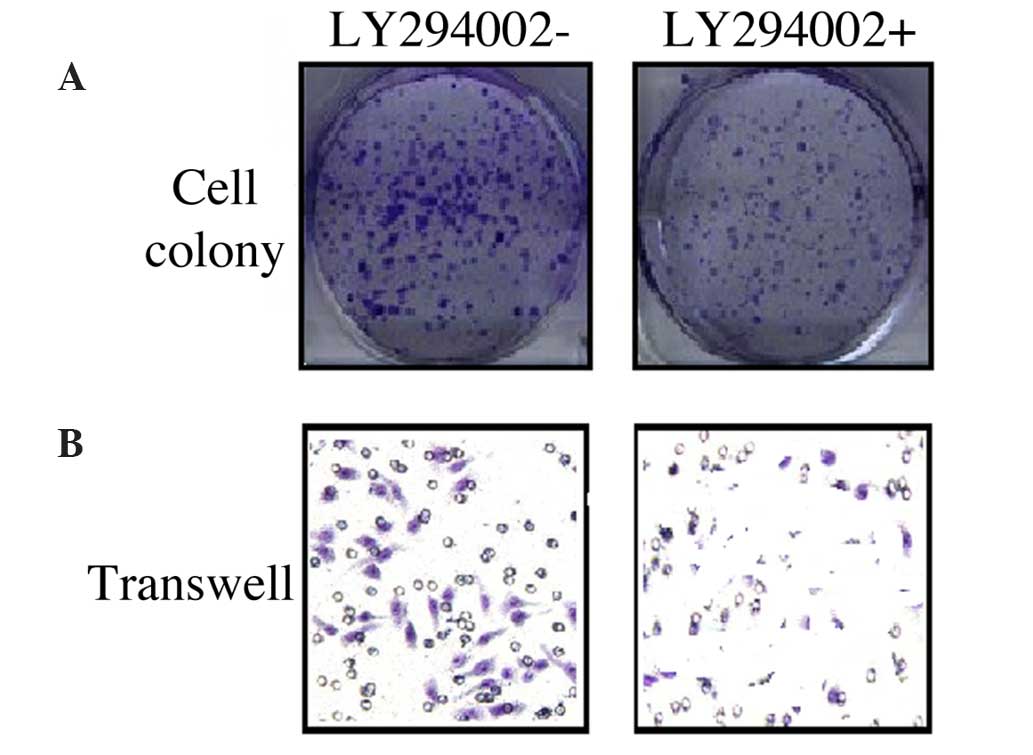|
1
|
Hao J and Chen WQ: The 2012 Chinese cancer
registry annual report. Military Medical Science Press; Beijing,
China: pp. 27–60. 2012, (In Chinese).
|
|
2
|
Giannini EG, Farinati F, Ciccarese F, et
al Italian Liver Cancer (ITA.LI.CA.) group: Prognosis of untreated
hepatocellular carcinoma. Hepatology. 61:184–190. 2015. View Article : Google Scholar : PubMed/NCBI
|
|
3
|
Deng GL, Zeng S and Shen H: Chemotherapy
and target therapy for hepatocellular carcinoma: New advances and
challenges. World J Hepatol. 7:787–798. 2015. View Article : Google Scholar : PubMed/NCBI
|
|
4
|
Liu X, Zhou Y, Liu X, et al: MPHOSPH1: A
potential therapeutic target for hepatocellular carcinoma. Cancer
Res. 74:6623–6634. 2014. View Article : Google Scholar : PubMed/NCBI
|
|
5
|
Zhou D, Huang C, Kong L and Li J: Novel
therapeutic target of hepatocellular carcinoma by manipulation of
macrophage colony-stimulating factor/tumor-associated macrophages
axis in tumor microenvironment. Hepatol Res. 44:E318–E319. 2014.
View Article : Google Scholar : PubMed/NCBI
|
|
6
|
Galuppo R, Ramaiah D, Ponte OM and Gedaly
R: Molecular therapies in hepatocellular carcinoma: What can we
target? Dig Dis Sci. 59:1688–1697. 2014. View Article : Google Scholar : PubMed/NCBI
|
|
7
|
Lee TK, Cheung VC, Lu P, et al: Blockade
of CD47-mediated cathepsin S/protease-activated receptor 2
signaling provides a therapeutic target for hepatocellular
carcinoma. Hepatology. 60:179–191. 2014. View Article : Google Scholar : PubMed/NCBI
|
|
8
|
Gao G, Gay HA, Chernock RD, et al: A
microRNA expression signature for the prognosis of oropharyngeal
squamous cell carcinoma. Cancer. 119:72–80. 2013. View Article : Google Scholar : PubMed/NCBI
|
|
9
|
Chen S, Xue Y, Wu X, et al: Global
microRNA depletion suppresses tumor angiogenesis. Genes Dev.
28:1054–1067. 2014. View Article : Google Scholar : PubMed/NCBI
|
|
10
|
Vriens MR, Weng J, Suh I, et al: MicroRNA
expression profiling is a potential diagnostic tool for thyroid
cancer. Cancer. 118:3426–3432. 2012. View Article : Google Scholar : PubMed/NCBI
|
|
11
|
van Kouwenhove M, Kedde M and Agami R:
MicroRNA regulation by RNA-binding proteins and its implications
for cancer. Nat Rev Cancer. 11:644–656. 2011. View Article : Google Scholar : PubMed/NCBI
|
|
12
|
Calin GA and Croce CM: MicroRNA signatures
in human cancers. Nat Rev Cancer. 6:857–866. 2006. View Article : Google Scholar : PubMed/NCBI
|
|
13
|
Scott GK, Goga A, Bhaumik D, et al:
Coordinate suppression of ERBB2 and ERBB3 by enforced expression of
micro-RNA miR-125a or miR-125b. J Biol Chem. 282:1479–1486. 2007.
View Article : Google Scholar : PubMed/NCBI
|
|
14
|
Cowden DK, Dahl R, Kruichak JN and Hudson
LG: The epidermal growth factor receptor responsive miR-125a
represses mesenchymal morphology in ovarian cancer cells.
Neoplasia. 11:1208–1215. 2009. View Article : Google Scholar : PubMed/NCBI
|
|
15
|
Cortez MA, Nicoloso MS, Shimizu M, et al:
miR-29b and miR-125a regulate podoplanin and suppress invasion in
glioblastoma. Genes Chromosomes Cancer. 49:981–990. 2010.
View Article : Google Scholar : PubMed/NCBI
|
|
16
|
Jiang L, Huang Q, Zhang S, et al:
Hsa-miR-125a-3p and hsa-miR-125a-5p are downregulated in non-small
cell lung cancer and have inverse effects on invasion and migration
of lung cancer cells. BMC Cancer. 10:3182010. View Article : Google Scholar : PubMed/NCBI
|
|
17
|
Wang G, Mao W, Zheng S and Ye J: Epidermal
growth factor receptor-regulated miR-125a-5p - a metastatic
inhibitor of lung cancer. FEBS J. 276:5571–5578. 2009. View Article : Google Scholar : PubMed/NCBI
|
|
18
|
Jiang L, Zhang Q, Chang H, et al:
hsa-miR-125a-5p enhances invasion in non-small cell lung carcinoma
cell lines by upregulating rock-1. Zhongguo Fei Ai Za Zhi.
12:1069–1073. 2009.(In Chinese). PubMed/NCBI
|
|
19
|
Hashiguchi Y, Nishida N, Mimori K, et al:
Down-regulation of miR-125a-3p in human gastric cancer and its
clinicopathological significance. Int J Oncol. 40:1477–1482.
2012.PubMed/NCBI
|
|
20
|
Coppola N, Potenza N, Pisaturo M, et al:
Liver microRNA hsa-miR-125a-5p in HBV chronic infection:
Correlation with HBV replication and disease progression. PLoS One.
8:e653362013. View Article : Google Scholar : PubMed/NCBI
|
|
21
|
Potenza N, Papa U, Mosca N, et al: Human
microRNA hsa-miR-125a-5p interferes with expression of hepatitis B
virus surface antigen. Nucleic Acids Res. 39:5157–5163. 2011.
View Article : Google Scholar : PubMed/NCBI
|
|
22
|
Bi Q, Tang S, Xia L, et al: Ectopic
expression of MiR-125a inhibits the proliferation and metastasis of
hepatocellular carcinoma by targeting MMP11 and VEGF. PLoS One.
7:e401692012. View Article : Google Scholar : PubMed/NCBI
|
|
23
|
Martini M, De Santis MC, Braccini L, et
al: PI3K/AKT signaling pathway and cancer: An updated review. Ann
Med. 46:372–383. 2014. View Article : Google Scholar : PubMed/NCBI
|
|
24
|
Yan-nan B, Zhao-yan Y, Li-xi L, et al:
MicroRNA-21 accelerates hepatocyte proliferation in vitro via
PI3K/AKT signaling by targeting PTEN. Biochem Biophys Res Commun.
443:802–807. 2014. View Article : Google Scholar : PubMed/NCBI
|
|
25
|
Wang RY, Chen L, Chen HY, et al: MUC15
inhibits dimerization of EGFR and PI3K-AKT signaling and is
associated with aggressive hepatocellular carcinomas in patients.
Gastroenterology. 145:1436–1448. 2013. View Article : Google Scholar : PubMed/NCBI
|
|
26
|
Abbud-Antaki RA, Marhefka JN, DeLuca AL
and Zuromskis MP: The cancer biochip system: A functional genomic
assay for anchorage-independent three-dimensional breast cancer
cell growth. Horm Cancer. 3:261–270. 2012. View Article : Google Scholar : PubMed/NCBI
|
|
27
|
Guadamillas MC, Cerezo A and Del PM:
Overcoming anoikis-pathways to anchorage-independent growth in
cancer. J Cell Sci. 124:3189–3197. 2011. View Article : Google Scholar : PubMed/NCBI
|
|
28
|
Okabe H, Ishimoto T, Mima K, et al: CD44s
signals the acquisition of the mesenchymal phenotype required for
anchorage-independent cell survival in hepatocellular carcinoma. Br
J Cancer. 110:958–966. 2014. View Article : Google Scholar : PubMed/NCBI
|
|
29
|
Marshall J: Transwell invasion assays.
Methods Mol Biol. 769:97–110. 2011.PubMed/NCBI
|
|
30
|
Janku F, Kaseb AO, Tsimberidou AM, et al:
Identification of novel therapeutic targets in the PI3K/AKT/mTOR
pathway in hepatocellular carcinoma using targeted next generation
sequencing. Oncotarget. 5:3012–3022. 2014.PubMed/NCBI
|















